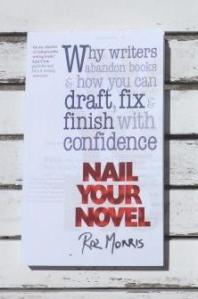Look what we found in the attic.
It’s a self-publishing supplement from the Writers’ Guild of Great Britain in New Year 2005.
When this was circulated, I was ghostwriting for Big Six publishers (when they were a Big Six) and hoping to get an agent for my own novel. My writer friends were on the same trajectory.
A book deal was the way – the only way – to get your work into the world. For posterity, for a career.
Self-publishing was a mysterious parallel universe. A few authors had used it to start good careers, but mainly because they got lucky. Maybe with influential reviewers. Maybe an agent bought a copy, as if they didn’t already have enough to read. If you didn’t get that luck, what happened? We never knew.
I think I had an early glimpse of a self-published book that didn’t get lucky. Our local second-hand bookshop had multiple copies of a mysterious grey novel that looked like no novel I’d ever seen before. It had a blank cover with only a title, which was curly, heavily shadowed and unreadable. I now realise it must have been an indie book that someone was desperate to get rid of, but at the time I was intrigued by its oddness. What was it trying to be? There were at least 20 copies and somehow this quantity, and the austere appearance, made the novel look like it knew something I didn’t. I believed that treasure came in odd disguises and I tried reading the first page. Oh dear, the prose was a droning info-dump and impossible to understand. But every time I went into the shop, those copies were still there, grey slabs of print that commanded a look because they were so wrong. Several times, I opened a copy and tried to like it. I wanted it to be a work of wonder and meaning. It wasn’t.
That seemed a shame. And the book seemed to embody so many of the things that could – and still can – go wrong with self-publishing. The general message at the time was: don’t do it.
Don’t do it. No, do
So when I found this self-publishing guide from 2005, I was curious. How did they make the case?
In the introduction, Tom Green notes how the publishing landscape has changed. It sounds familiar: ‘More people are chasing less space on the lists of traditional publishers and agents. Even established writers find themselves dropped without warning if they are not the flavour of the month and don’t have the required celebrity status to get coverage in the media.’
That could be today. But the reasons to self-publish in 2005 weren’t all negative. Tom also points out two clear advantages – control over the product, and control over other rights. Today, those are massive cornerstones of independent publishing – we decide how the book will be, we get maximum value out of other forms such as audiobooks, translations etc.
And with those freedoms came a warning. Again, a familiar one – the great potential to make mistakes. Not just mistakes of quality, like our friend with the unedited, mispresented grey doorstop, but financial mistakes. Then, as now, writers had to avoid overpriced services of dubious value, and contracts that strip you of your rights.
If only they knew
As I read, I thought how they couldn’t have known how much easier their path was about to become. Just a few years later, much of the expense and difficulty of self-publishing was swept away by two developments – ebooks and the miracle of the online world.
First, ebooks. All self-publishing in 2005 was print. It wasn’t that ebooks hadn’t been invented – Project Gutenberg made the first one in 1971 – but we hadn’t yet got devices for reading them comfortably. Who wants to read a book on a desktop or laptop?
And second, our online infrastructure – we hadn’t yet got the internet plumbing that allows us to sell books worldwide, via huge online stores that might be on a different landmass from the country we write in. That same internet plumbing also brought massive opportunities to share our learning so we can self-publish well.
So in 2005, books were paper chunks. Moreover, you had to guess how many to make (in the hundreds), then store and ship them or pay someone for that. Print on demand (POD) did exist, but not in the sense we know it. Although it was possible to produce one copy at a time, POD was more normally used by trade publishers for short runs of backlist titles.
Let us give hearty thanks for our highly evolved POD and ebook sales systems. Whenever I teach a course in self-publishing (yes, I do that), it’s the first thing I explain.
One interesting attitude in 2005 is that self-publishing was seen as a stepping stone. Joanna Anthony, who at the time was marketing director of hybrid publisher Pen Press, writes: ‘I believe there will be a time when all unknown authors self-publish to test the market and mainstream publishers will pick them up once they have proved they have a market’. Although that does happen now, many self-publishers are happy to stay indie.
Small world
So self-publishers of the 2020s can reach readers more easily, and with good-looking books – but that freedom has come at a price. The books world of 2005 was much, much smaller. Thousands of titles were published in the UK each month (about 8,000 a month according to the wholesaler Gardners), and that might sound like a lot, but they went out of print. Now, nothing goes out of print, and there are more new releases than ever because it’s easy. Soon we’ll have more books than there are atoms in the sea. Authors have powerful tools to market and promote their books, but it’s competitive and expensive – for some of us, prohibitively so.
In the simpler days of 2005, marketing was still a big issue, and authors were advised they needed to take it as seriously as the writing.
But they were also reminded that it could be an extension of their natural talents. Dick Sharples had a lot of cheeky fun with his book, A Year In Muswell Hill. It was a spoof of Peter Mayle’s A Year In Provence, penned under the name Pierre LaPoste. As Dick built awareness for the book, he says, ‘angry letters by apprehensive local residents began appearing in the local press demanding that the book be banned, especially as LaPoste had promised his book would “do for Muswell Hill what Peter Mayle did for Provence”, in other words, bugger it up.’ The national papers got wind of the story (nice one, Dick), and turned up in Muswell Hill, hoping to interview LaPoste. Dick pretended LaPoste had fled to Provence and the book sold out several print runs.
As I read the guide’s advice on marketing and other services, I reflected how lucky we are now. Authors of the 2020s can get advice and protection from several high-profile organisations – the Alliance of Independent Authors and Victoria Strauss’s site Writer Beware.
I turned the page and there was Victoria Strauss herself, sharing her knowledge and experience, helping writers avoid bad choices, already a strong voice to make the indie world a better place.
There were many surprises in this little publication, but that was the nicest.
There’s a lot more about writing in my Nail Your Novel books – find them here. If you’re curious about my own work, find novels here and my travel memoir here. And if you’re curious about what’s going on at my own writing desk, here’s my latest newsletter. You can subscribe to future updates here.





 I’ve had a worrying experience with a local book club. I’m not sure it is as it appears, so I won’t name names. But either way, it raises worrying questions about the way authors’ work is valued.
I’ve had a worrying experience with a local book club. I’m not sure it is as it appears, so I won’t name names. But either way, it raises worrying questions about the way authors’ work is valued.



















